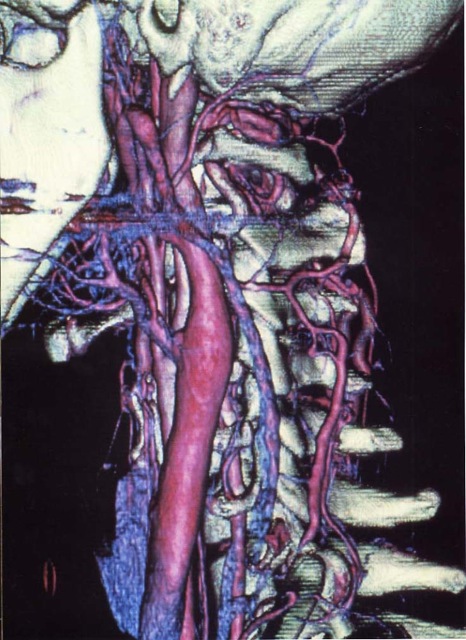
Musculoskeletal Radiology
Cervical Spine

1. Analyze and compare the cervical vertebrae and their basic parts: bodies, transverse processes, spinous process, laminae, and articular facet (zygapophyseal) joints.
2. Recognize the unique features of the atlas (C1) and the axis (C2)
A lateral radiograph of the cervical spine shows the cervical vertebrae and their basic parts: bodies, transverse processes, spinous process, laminae, and articular (zygapophyseal) joints. In an AP radiograph the zygapophyseal joints are readily visualized, as is the bifid C6 spinous process. The cervical spinous processes between C2 and C6 are usually bifid. The transverse processes of T1 can be seen articulating with the first ribs. These transverse processes are either horizontal or positioned obliquely upward. Oblique views of the cervical spine are required to obtain images of the intervertebral neural foraminae (note that the pedicles form the cranial and caudal boundaries of these foraminae). The laminae are seen in cross-section. In an open-mouth view of the dens the articular relationships of the axis and atlas are seen.

